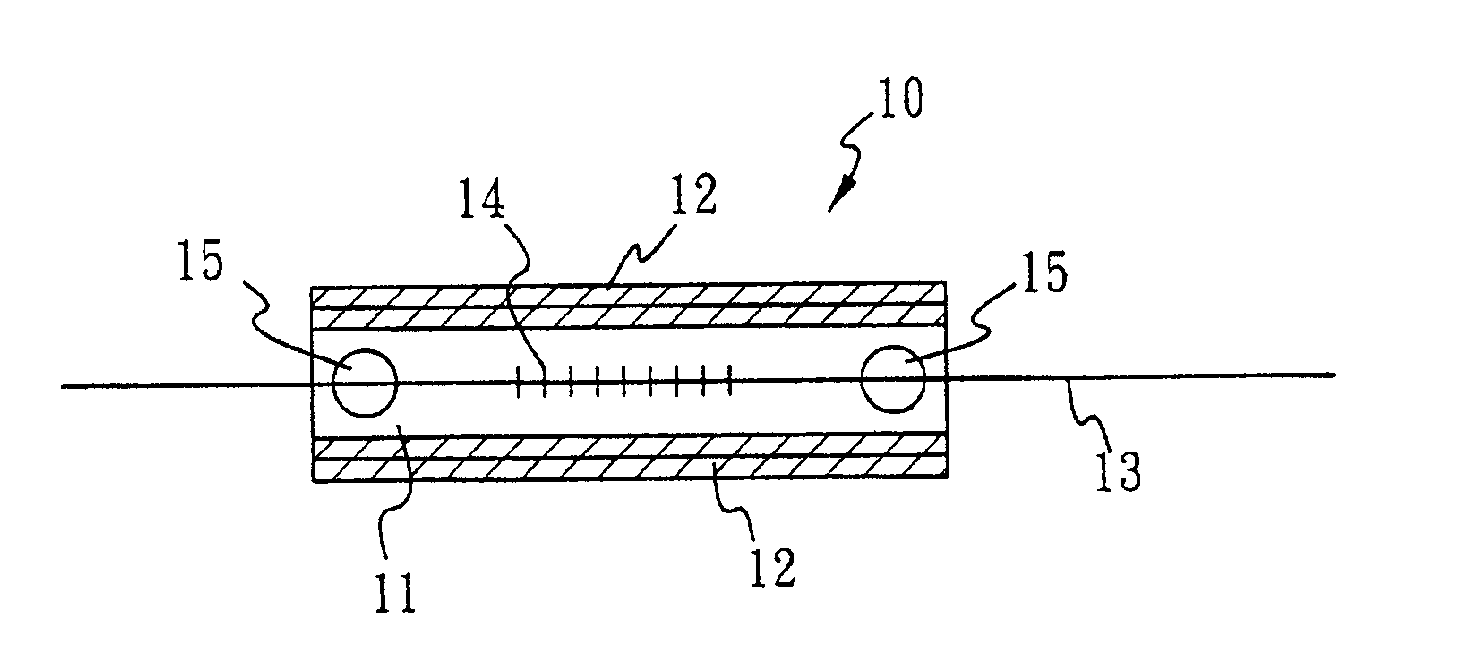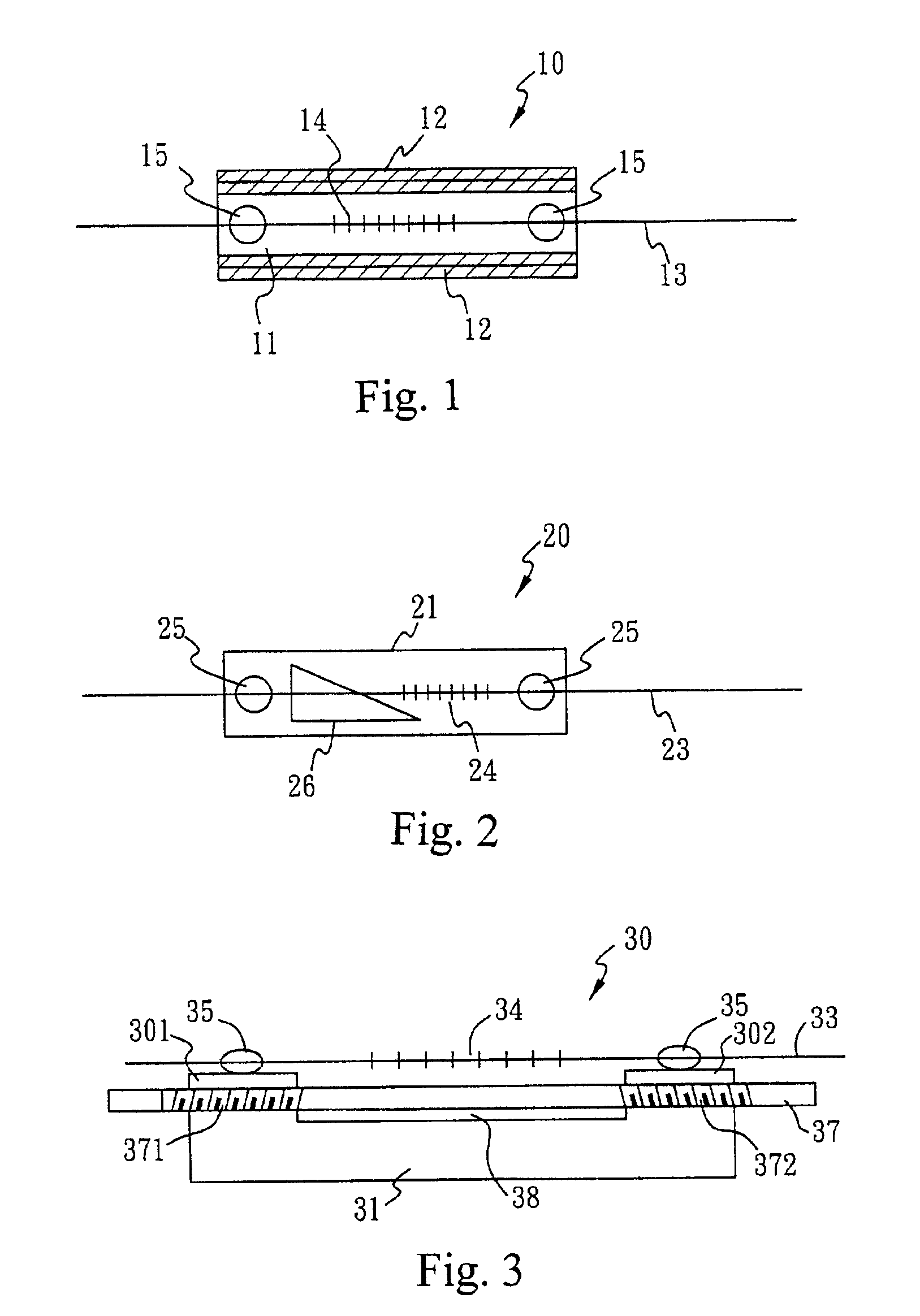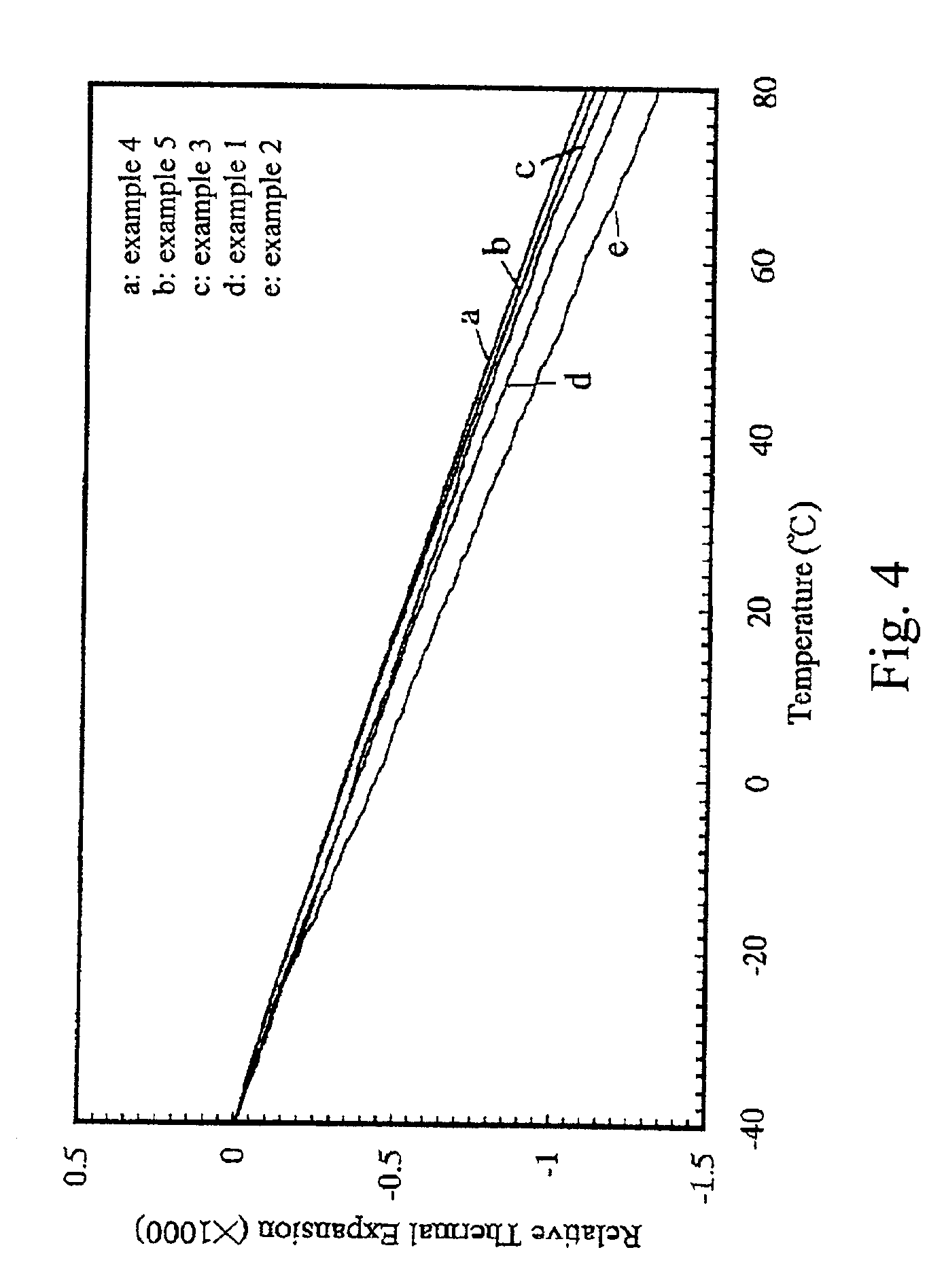Process for preparation of zirconium tungstate ceramic body, zirconium tungstate ceramic body prepared thereby, and temperature compensated fiber bragg grating device
a technology of zirconium tungstate and ceramics, which is applied in the field of process for preparing zirconium tungstate ceramic bodies prepared thereby, and temperature compensation fiber bragg grating devices, can solve the problems of inability to easily achieve the desired precision, and inability to achieve the desired precision. , to achieve the effect of shortening the preparation time, saving costs and simplifying the procedur
- Summary
- Abstract
- Description
- Claims
- Application Information
AI Technical Summary
Benefits of technology
Problems solved by technology
Method used
Image
Examples
example 1
The Preparation of Zirconium Tungstate Ceramic Substrate—Without Adding Powders of Zirconium Tungstate Single Crystal
[0066]The ZrO2 and WO3 powders in the molar ratio of 1:2 (Zr:W) and an organic binder were dispersed in deionized water, grounded and admixed to form a slurry. The mixed well slurry was dried at 105° C. The dried powders of 25 g were dry-pressed to form a plate-shaped compact of 60 mm×35 mm. The plated-shaped compact was sintered at 1200° C. for 6 hours and then was immediately quenched to room temperature in the air to obtain a single-phase α-ZrW2O8 ceramic body. The thermal expansion coefficient of the zirconium tungstate ceramic body, measured by dilatometer over −40° C. to 80° C., was found to be −10.02×10−6 K−1. The relative expansion of the zirconium tungstate ceramic body over temperature was shown as curve d in FIG. 4. After being abraded on both surfaces to the desired thickness, the zirconium tungstate ceramic substrate was diced by a diamond saw to a desire...
example 2
The Preparation of Zirconium Tungstate Ceramic Substrate—Seeding of Zirconium Tungstate Powders
[0067]1.0 wt. % of zirconium tungstate powders were added to the mixture of ZrO2 and WO3 powders in the molar ratio of 1:2 (Zr:W) as the seeds for the formation of zirconium tungstate grain by reactive sintering, the raw materials were then ground and admixed in deionized water. The well mixture was admixed with an organic binder and then dried. The dried powders of raw materials of 25 g were dry-pressed to form a plate-shaped compact of 60 mm×35 mm. The plate-shaped compact was sintered at 1150° C. for 4 hours and then was immediately quenched to room temperature in the air to obtain a single-phase α-ZrW2O8 ceramic body. The sintering temperature and duration were obviously lessened. The thermal expansion coefficient of the zirconium tungstate ceramic body was −10.85×10−6 K−1. The relative expansion of the zirconium tungstate ceramic body over temperature was shown as curve e in FIG. 4. A...
example 3
Tuning the Thermal Expansion Coefficient of Zirconium Tungstate Ceramic Substrate—Using Non-Stoichiometric ZrO2 and WO3
[0068]After 10.4 g of ZrO2 powders and 31.6 g of WO3 powders were ground and admixed in deionized water, an organic binder was added to form slurry and then dried at 105° C. The preparation and processing after drying were those as shown in Example 1. The thermal expansion coefficient of the obtained zirconium tungstate ceramic body was −9.51×10−6 K−1. The relative expansion of the zirconium tungstate ceramic body over temperature was shown as curve c in FIG. 4.
[0069]To further lower the sintering temperature and shorten the sintering duration by adding the zirconium tungstate seeds, the raw materials were replaced with 10.316 g of ZrO2 powders, 31.284 g of WO3 powders, and 0.4 g of ZrW2O8 powders. The subsequent admixing steps were the same as the above. Because adding the seeds, the obtained plate-shaped compact could form zirconium tungstate ceramic body by the ...
PUM
| Property | Measurement | Unit |
|---|---|---|
| temperature | aaaaa | aaaaa |
| temperature | aaaaa | aaaaa |
| decomposition temperature | aaaaa | aaaaa |
Abstract
Description
Claims
Application Information
 Login to View More
Login to View More - R&D
- Intellectual Property
- Life Sciences
- Materials
- Tech Scout
- Unparalleled Data Quality
- Higher Quality Content
- 60% Fewer Hallucinations
Browse by: Latest US Patents, China's latest patents, Technical Efficacy Thesaurus, Application Domain, Technology Topic, Popular Technical Reports.
© 2025 PatSnap. All rights reserved.Legal|Privacy policy|Modern Slavery Act Transparency Statement|Sitemap|About US| Contact US: help@patsnap.com



